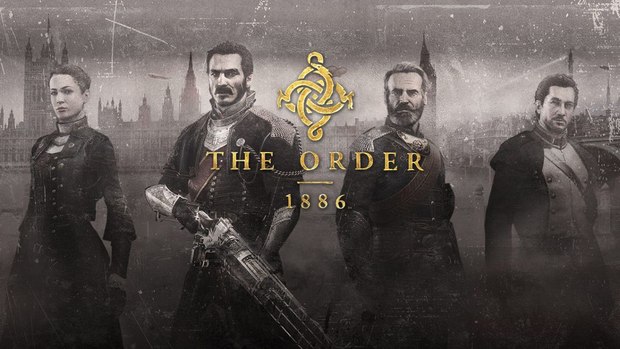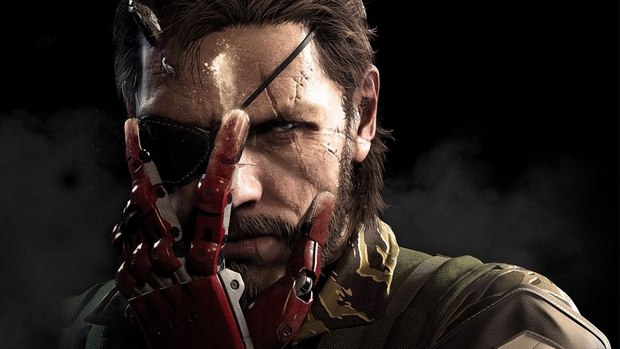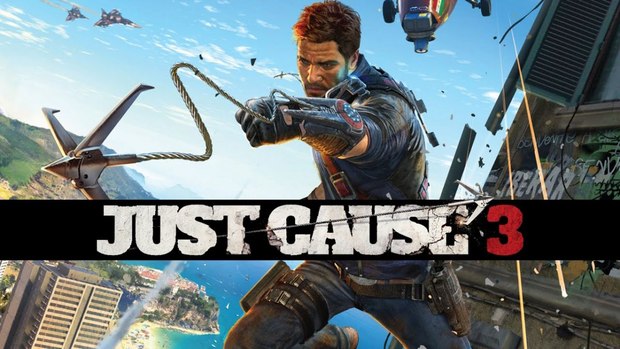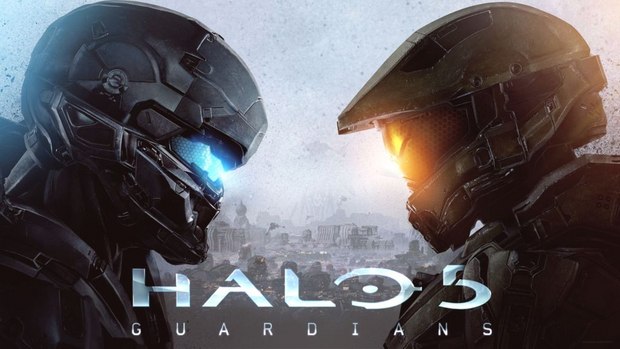Spencer Fawcett rates his 5 most disappointing games of the year.
Every year, we experience both good and the bad offerings from the video game industry. None of the following games are broken or, at the very least, not enjoyable to play. Play just ended up feeling hollow. “Something” was missing from these five games - crucial game design and creative decisionmaking seemed lacking. Ultimately, execution on the following games fell short of reaching the greatness that they were expected to achieve.
#5 – The Order: 1886
In February, no one knew what to expect from The Order: 1886. It was billed as a cinematic experience and had the graphical fidelity to back it up with a letterbox presentation to boot. Unfortunately, the steampunk third-person shooter, set in Victorian London, never amounted to much past that. Forced walking and stealth segments that upset the pace of the game, combined with a short 5-6 hour campaign length with little replay value, dragged this game onto this list.
The potential this game had to become another new high-profile intellectual property (IP) on Sony’s first party roster was staggering. The world and time period of 19th Century London, with characters like Nikola Tesla helping knights of the round table, held such promise. The level of detail in the characters was impressive and stood out in a market of high-budget AAA games. Yet everything fell flat under boring and mediocre combat mechanics. The Order’s boss encounters were nothing but QuickTime events (Press X to not die); sucking the tension and fun out of any encounters with foes more powerful than you.
Unfortunately, The Order: 1886 was the tip of the iceberg for 2015.
#4 – Metal Gear Solid V: The Phantom Pain
Konami/Hideo Kojima behind the scenes politics aside, The Phantom Pain was easily the weakest entry in the Metal Gear franchise. Set after the events of Metal Gear Solid: Peace Walker and last year’s $40 “Ground Zeroes” prologue, the player once again takes control as Big Boss – series “villain” and antagonist. After the events of “Ground Zeroes,” Big Boss must reclaim what he lost, which included his base, his arm and his reputation. The game’s first act is an exciting romp through Afghanistan and Africa with Big Boss meeting old and new friends to help him on 50 story and 100+ side missions. The first time you get to choose your mission approach gives the player agency, but it wears thin.
Will you sneak your way inside a base? Or will you snipe every guard from afar to avoid detection all together? Maybe you decide to C-4 a jeep and drive it into a guard tower. You’ll soon have your favorite approaches and the game won’t have you deviate from them. It will, however, force you to wait for an obnoxious amount of time to get better equipment – approx. 30 minutes for small items and 60+ minutes for larger equipment.
Unfortunately, once you cross that threshold into the second act of Metal Gear Solid V, the game becomes an absolute bore. You will quickly realize there’s nothing to interact with besides guard checkpoints and larger, more intricate bases. Plot points are raised and lazily connected to Metal Gear Solid 1 with no meat to chew on or nor new revelations to speak of in the series lore. “New” missions in Act 2 are mostly pre-existing ones with artificial difficulty such as not getting detected once or not getting shot – they just don’t excite as much as Act 1. The boss battles in MGSV also disappoint. Only one of the “boss fights” challenged me and it was mostly solved by trial and error to see how many rockets I could fire before I could die. My knowledge of the game was not being tested. My patience was.
#3 – Just Cause 3
Much like Metal Gear Solid V: The Phantom Pain, Just Cause 3 focused on gameplay but spent little time on world building or story to engage the player. As Rico Rodriguez, you are tasked with liberating the fictional land of Medici from a dictator because…he’s a bad man? From the story, that’s what I came to understand of the stakes and the tension, or lack thereof. But who needs a compelling narrative when you have so many exploding canisters to shoot at or helicopters to dive out of. When you begin to realize just how little Just Cause 3 has to offer as an open world game, you’ll slowly run out of steam when you have to take out yet another base with the same artificial check boxes for the umpteenth time.
All of this could be excused if the game ran at a decent framerate or played well. While the latter can be overcome with a learning curve, the former is in such disrepair that it falls solely on the developer’s shoulders to fix. The game’s framerate crawls when there are multiple explosions on screen which, for any other game, would be a rare occurrence - for Just Cause 3, it’s endless. There was tremendous hype for what Avalanche Studios would do with next-gen hardware after the delightfully insane Just Cause 2. What followed was a hot mess of a game that does nothing to bolster the foundation it had previously laid down.
#2 - Halo 5: Guardians
If there was an award for “Most Disappointing Developer,” 343 Industries would win it every year they release a Halo game. After the colossal misstep that was and still is The Master Chief Collection, 343 decided to move past their black eye straight into another right hook. Halo 5: Guardians was expected to be a revelatory change in the Halo franchise with 343 shoe-horning a new character – Jameson Locke – to go after the green suited, Master Chief after he goes AWOL (Absent Without Leave). Halo 5 chronicles Master Chief’s handful of missions across the shortest campaign in a Halo game while focusing primarily on Jameson Locke.
That wouldn’t have been such a horrible thing if Locke or his comrades were the least bit interesting. His story is passive and reactionary to larger machinations at work in the narrative as he follows in the footsteps of a more active character whom the player should be controlling. Halo 5 is also guilty of terrible “bullet sponge” boss design that is repeated approximately five times throughout the game. The set pieces of Halo 5: Guardians are lifted wholesale from previous Halo games. All of this could be excused if the game didn’t have the audacity to end on a cliffhanger that resolved nothing.
Halo 5: Guardians’ other modes – Warzone and Arena – are enjoyable in their own right but have been bogged down by the REQ packs and system. Armor and weapon modifiers - in a Halo game? - are tied to a Random Number Generator (RNG). That means that if you see some armor variant that is appealing to you, all you can do is hope that the game is going to give it to you. You can also purchase REQ packs with real money, effectively inserting micro-transactions into a $60 retail release. From the “Call of Duty” gameplay and weapon modifications to a lackluster campaign, this follow-up to a lauded franchise is indeed a runner-up to the most disappointing game of the year.
#1 – Batman: Arkham Knight
Perhaps it’s my own fault for expecting too much from Rocksteady. But Batman: Arkham Knight disappointed me on nearly every aspect of the game. From their previous iteration – Batman: Arkham City – and the uninspired Arkham Origins, expectations from Rocksteady was that they would deliver the emotional gut punches that they did with the ending of Arkham City. They even included a “brand new” villain, The Arkham Knight, whose name is a cheap gimmick done for the sake of consistency within the “Arkham” series. The over-reliance on the Batmobile was cute and entertaining at first - when it’s Batman’s go-to option for solving any obstacles he comes across, it quickly wears out its welcome.
The story of Arkham Knight starts off very promising but wears thin, as there are no bold creative decisions – instead, the game rests on the laurels on the pre-existing Batman stories. The Arkham Knight’s true identity is emblematic of this. The side missions, while entertaining, are repeated ad nauseam with Penguin and Two-Face – shown working together in promotional trailers – who are separated in their efforts to sell weapons and rob banks. The prophecy of Azrael that was teased in Arkham City to elevate Batman’s dangers was dull and the Deathstroke fight was a blatant re-hash of a previous boss encounter. And, they all culminate in an ending that was gated off once by fulfilling an arbitrary percentage of game completion – you eventually reached the “true” ending by acquiring a number of items strewn throughout the massive map of Gotham City.
But the greatest disappointment came in the $40 Season Pass. Pitched to the gaming public before the release of the game, The Arkham Knight Season Pass promised steadily streaming content throughout the year, which was delivered. Whether or not the 10 minute episodes with Nightwing/Robin/Catwoman and sparse challenge maps – that should have been included in the game to begin with – are worth the price is entirely up to the buyer. I should also mention the fact that Batman: Arkham Knight on PC was so broken that Warner Bros. had to pull the game off the PC store (Steam) and released it months later. Any which way you look at it, Batman: Arkham Knight is the most disappointing game of 2015.
--
Spencer Fawcett is a screenwriter who also does production work for NBC/Universal. He has written for Parade Magazine and ASUs The State Press. Twitter: Whizbang813












